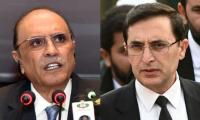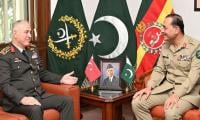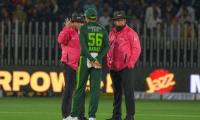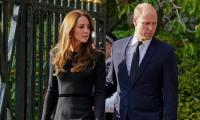What is an exhibition of Picasso and Giacometti doing in a fine arts museum in Doha, Qatar - an Arab capital - at a time when Syrian children are gassed to death and millions of Arabs are forced into mass exodus from their homelands?
The exquisite exhibition capably curated by Catherine Grenier and her colleagues at the Fire Station in Doha is a rare gem to behold and yet, when you are done with the exhibition and walk out into the nondescript Doha neighbourhood where the venue is located, you might be tempted to wonder in what way is this exhibition different here, in these trying times for the Arab and Muslim world, then if it were in Paris, London, or New York.
There are a number of reasons one might consider as to why such an exhibition is perfectly legitimate to hold in a peaceful and prosperous Arab capital.
The curatorial insights into the relationship – both personal and artistic – between the two European artists is, in and of itself, a legitimate artistic occasion for this exhibition anywhere in the world, including Doha.
Although many of the more than 120 items exhibited at the Fire Station come from Musee national Picasso-Paris and Fondation Giacometti, there are also items from other private collections.
The first time I visited Doha was for the opening of the prominent Chinese artist Cai Guo-Qiang’s exhibition titled Saraab (Mirage) on December 4, 2011. On that occasion, the artist staged his colourful gunpowder shows as the Arab world from one end to another was revolting against tyranny. It was quite a jarring spectacle.
The question today, more than half a decade later, still remains what exactly is the defining character of an Arab capital, as evident in the kinds of art exhibitions in which it invests its resources.
The more difficult and judicious answer is in the balance between the two: respect and admiration for European and European-approved art and at least an equally principled commitment to Arab and regional artists - from Turkey to Iran, India, Pakistan, and well into the extraordinary modern and contemporary African art beyond the aesthetic reach of Europe and European approval.
Prosperous and peaceful Arab capitals like Doha, Dubai, Kuwait City, or Muscat have a unique historical opportunity to redefine the Arab capital in a manner that is neither Eurocentric nor Europhobic; neither retrograde nativist nor rootless cosmopolitan.
Cliche-ridden and totalising narratives, such as “West versus East”, or “Tradition versus Modernity”, or “Nativist versus Global”, must judiciously yield to far more critical thinking focusing on the manner in which art and culture, just like people and their dreams, cross borders with the force of destiny.
Those refugees who have packed their meagre belongings and precious children and dared the dreadful seas and treacherous terrains to march from war-torn neighbourhoods towards an uncertain future in Europe have already radically re-territorialised the dubious metaphors of “East and West.”
To reimagine the artistic heritage of nations worthy of the nobility and courage of those refugees, and the gushing wounds of brutalised countries like Syria, museums and art exhibitions are lagging far behind the traumatic border crossings of Arab and Muslim migrants and refugees redrawing the global map.
This article has been excerpted from: ‘Rethinking the Arab
capital through art’.
Courtesy:Aljazeera.com
India uses Afghanistan as a backstage area to carry out terrorist attacks against Pakistan
Another report by the Pakistan Institute of Peace Studies states that 78 per cent of attacks have been carried out by...
Pakistan stands at the forefront of this crisis, generating a staggering 3.3 million tonnes of plastic waste annually
Today, a total of 11,000 children are attending Daanish schools in Punjab
The emotional instability of parents inculcates a range of psychological issues in children







